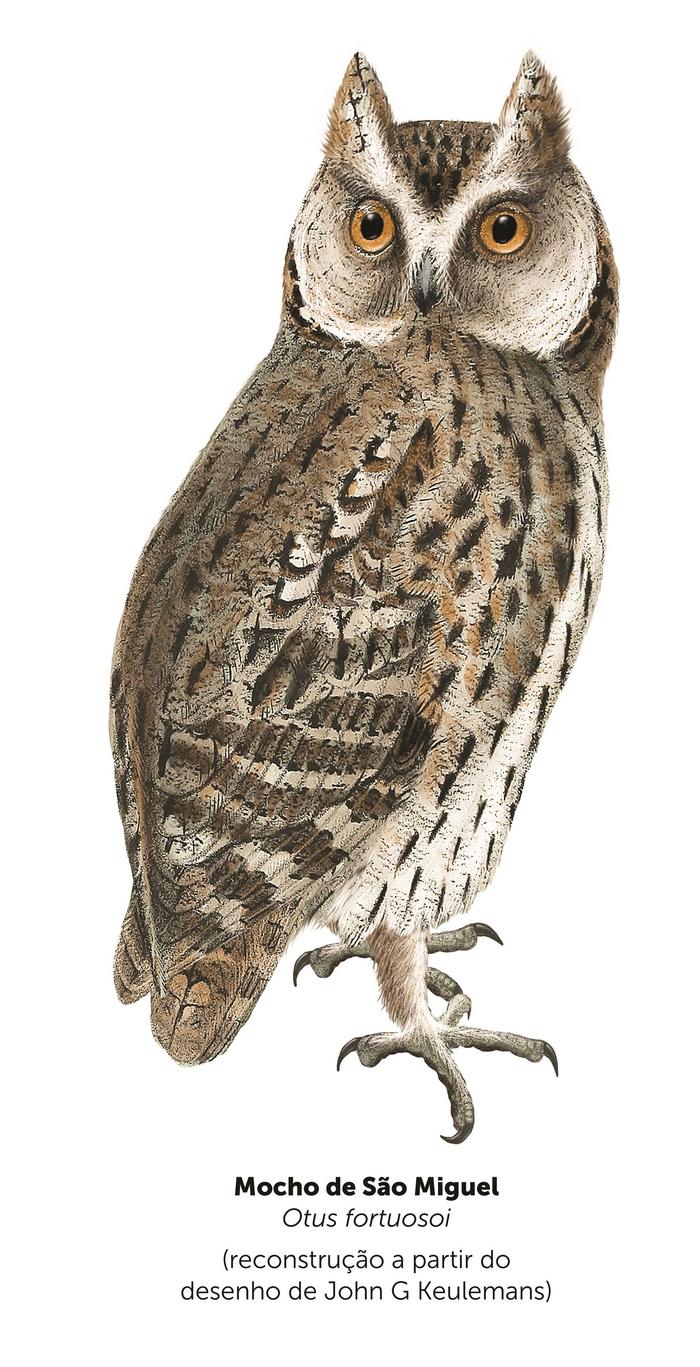A carregar...
O mocho-de-São-Miguel foi descrito pela primeira vez pela equipa de Juan Carlos Rando, a partir de vários ossos encontrados na gruta de Água de Pau, em 2011. O nome científico Otus frutuosoi, foi atribuído por esta equipa de cientistas em homenagem ao grande historiador Gaspar Frutuoso, autor da obra “Saudades da Terra”. A datação, pelo método do Carbono 14, permitiu determinar que os ossos teriam cerca de 2000 anos. Era mais pequeno que o seu congénere continental – o mocho-pequeno-de-orelhas –, tinha asas mais curtas e pernas mais longas, estando bem adaptado à vida no solo. A sua extinção terá ocorrido pouco depois da chegada dos primeiros povoadores à ilha, no séc. XV, mais uma prova do forte impacto humano sobre os ecossistemas. [AE]
Juan Carlos Rando and his team described the São Miguel scops owl for the first time in 2011 when they came upon bone remains found in a cave located in Água de Pau. The scientific name Otus Frutuosoi was attributed in homage to the great historian Gaspar Frutuoso, author of Saudades da Terra. It was also possible to determine that the bones were about 2000 years old, by using the Carbon-14 method. The bird was smaller that its mainland relative – the scops owl -, had shorter wings and longer legs, which allowed it to better live on the ground. Its extinction might have occurred shortly after the first settlers arrived on the island in the 15th century, yet another proof of the strong human impact on the ecosystems. [AE]
Juan Carlos Rando and his team described the São Miguel scops owl for the first time in 2011 when they came upon bone remains found in a cave located in Água de Pau. The scientific name Otus Frutuosoi was attributed in homage to the great historian Gaspar Frutuoso, author of Saudades da Terra. It was also possible to determine that the bones were about 2000 years old, by using the Carbon-14 method. The bird was smaller that its mainland relative – the scops owl -, had shorter wings and longer legs, which allowed it to better live on the ground. Its extinction might have occurred shortly after the first settlers arrived on the island in the 15th century, yet another proof of the strong human impact on the ecosystems. [AE]
A carregar...


